Theth – Shkodër
Thethi – The Village in the Heart of the Albanian Alps
Thethi is a village of rare beauty, located in the heart of the Albanian Alps. This village lies in the northern part of the Shala Valley, seventy kilometers away from the city of Shkodra. The high valley of Theth, one of the most special areas of the Albanian Alps, has been the “locomotive” for promoting other villages in the Alps and attracting tourists year after year.
The unique beauty of this mountain village ensures it holds a significant place in Albanian nature and tourism. To reach Theth, you must pass through the Thore Pass at an altitude of 2000 meters and then descend into the Theth Valley, crossing the stream of the same name. The journey offers breathtaking mountain panoramas, and photography enthusiasts will find plenty of picturesque paths to capture.

Among Theth’s attractions are the Waterfall and Grunas Canyon, the Theth Waterfall, the marvelous cold water springs of Okol, caves, and the Harap Mountain, Birat e Rrathëve, etc.
Given its features and location near the border, Theth has been a starting point for early constructions serving tourism. Alpine lodges and buildings have been constructed in this tourist village, accommodating numerous visitors from all over Albania and Europe.
Razëm – Shkodër
Razma, the Oasis of Serenity Amidst Pine Forests and Majestic Peaks
Only 45 minutes after leaving Shkodra, you arrive in the village of Razma. The natural beauty begins to enchant you from the journey through the narrow roads that snake through the mountains. The mountains, forests, and rivers create a unique horizon filled with beauty and rejuvenating energy.In certain areas of Razma, you can find holiday homes nestled among pine forests, surrounded by the high peaks of the Albanian Alps. This destination is among the most preferred by both local and foreign tourists, who are attracted by the virgin nature reminiscent of fairy tales, the clean air, and the hospitality of the villagers, which has promoted Razma as a favorite place to visit not only during the hot summer days but throughout the year.
Lëpushë – Shkodër
The Village of Lëpushë, the Natural Masterpiece of the Albanian Alps
The deeper you venture into the Alps, the more rare natural beauties you will discover. The village of Lëpushë, located at an altitude of over 1260 meters, is in the municipality of Këlmend in the Great Highland region, one of the largest and most beautiful regions of northern Albania, near the border with Montenegro. This village has been increasingly recognized and promoted by local and foreign tourists in recent years, who often return after their first visit.
Lëpushë is a small village, but exploring it is a unique pleasure. Even during the summer, you can still find traces of unmelted snow in Lëpushë. The village is situated among high, steep mountains, green meadows, and forests, where the houses have been converted into inns offering all services for travelers. The inns’ owners have set up outdoor fireplaces, which are lit in the evenings, inviting all visitors to spend beautiful and unforgettable moments together, chatting, singing, dancing, and exchanging jokes.Lëpushë is a wonderful place with high potential for the development of mountain tourism, for alpinism, snowboarding, and exploring the flora and fauna of the region.
Customise your Albanian tour now!
Other Destinations
Valbona – Tropojë
Valbona – The Wonder of the Alps
The village of Valbona is nestled among steep gorges, along the Valbona River, between Mount Kollata and Mount Jezerca, at an altitude of 810 meters above sea level. The Valbona Valley, declared a National Park, is undoubtedly one of the most favored tourist attractions in northern Albania. This village offers a landscape of rare beauty and clean air. The Valbona River, which flows through the village, and the Valbona Valley itself attract many visitors, making the village of Valbona one of the most beautiful mountain tourism destinations in Albania.
Shishtavec – Kukës
The Village of Shishtavec, the Gem within the Korab – Koritnik National Park
Shishtavec, a tourist village 30 km away from Kukës, is a natural gem that has become one of the most preferred destinations for mountain tourism in recent years. The winter season, which dresses the village in white, is the most beautiful period to visit Shishtavec. The unique landscapes, alpine meadows, forests, and natural monuments, such as the Stone of Morning, Stone of the Eagle, Lake Novosej, Mount Kallabak, and the Shishtavec Mountains, are some of the enchanting natural attractions of Shishtavec village.
The Shishtavec Mountains during winter are highly suitable for skiing.
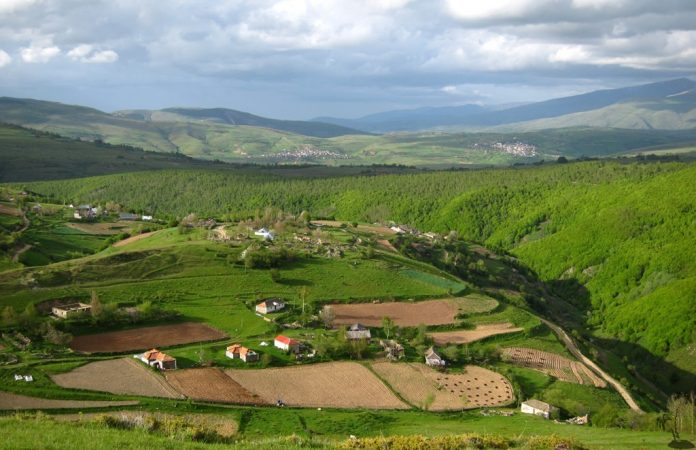
Radomirë – Dibër
Radomirë, the Village at the Foot of Mount Korab
Radomirë, situated at the foot of Mount Korab, is on the list of the top 100 tourist villages of Albania. Located 35 km away from Peshkopi, in the Dibra highlands, Radomirë is surrounded by a fairy-tale nature with dense forests, alpine meadows with clean air, and water sources, including the Black Lake, offering boundless opportunities to discover Radomirë as an all-year-round tourist destination.
The village is part of the most important mountain trails along the Deshat – Korab mountain range, starting from Maqellara to the exit at Kala e Dodës, a worthy place for hiking. During winter, the village is covered in snow for weeks, allowing the use of mountain slopes for skiing. Hiking, trekking, walking, and gathering medicinal herbs, horse riding, or bird watching are some of the entertainment forms during your stay in Radomirë, where amid the paradise of multicolored valleys surrounded by majestic peaks, you can hear the beautiful murmur of streams.
Kallmet – Lezhë
Kallmet – The Ancient Village in the Field of Zadrima
The village of Kallmet, in the district of Lezhë, lies under the Vele mountain range and the Zadrima field. Kallmet is an ancient settlement, as archeological discoveries throughout the village have shown that it has been inhabited since the Neolithic period up to late antiquity. The culture, clothing, and regional products have made this village a unique ethnographic unit in the district of Lezhë. In Kallmet, you can also find cultural monuments such as the Church of Eufemia, a holy place from the 13th century, visited by believers from the northern regions of Albania.
Fshati Shëngjergj – Tiranë
Shëngjergj, the Green Magic Near the Capital
Shëngjergj, one of the natural beauties of the Tirana Highlands, is about 40 km away from the capital. The village is blessed with a breathtaking panorama of green hilly terrain and mountainous relief, on the bed of the Erzen River and surrounded by the Mountain with Hollows. The Shëngjergj area is rich in numerous water sources and lakes, which attract nature enthusiasts to visit. Shëngjergj, only an hour away from Tirana, is now one of the capital’s main attractions with potential for the development of mountain, sports, and family tourism. Around the village, there are many churches and villages named after dozens of saints. During your stay in Shëngjergj, you have a long list of attractions not to miss, such as the Shëngjergj Waterfall, the Ruins of the Shëngjergj Castle, the Castle of St. George, the Vali Cave, and the Mountain with Hollows.
Fshati Petrelë – Tiranë
Petrela – the Tourist Destination Above the Erzen Valley
12 km southeast of the capital, Tirana, on the Tirana-Elbasan national road, is the tourist village of Petrela. The village extends on both sides of the Erzen Valley, offering a stunning panorama. The territory of Petrela is bordered to the east by Mount Dajti, to the south by the village of Bërzhitë, to the west by the village of Baldushk, and to the north by the village of Farkë. The Petrela area is characterized by a typical Mediterranean climate with rich biodiversity. The village enjoys a marvelous contrast of nature, intertwining fields, hills, and valleys. Along the Erzen River and the surrounding hills, restaurants and tourist resorts have been built, where during the summer season you can dive into the river’s waters, sunbathe while enjoying the beautiful nature, and engage in various water sports and activities.
The most significant tourist attraction in the village is the medieval castle of Petrela, built on a steep hill, which once controlled the ancient Egnatia road. The Castle of Petrela is a widely visited tourist complex by both local and foreign tourists.Nearby tourist destinations include the Bride’s Turban, the ancient settlement of Përshqop, or the Petrela Lapidarium, where centuries-old heritage and traditions are interwoven in the preserved century-old buildings.
Gjinar – Elbasan
Gjinari, known as the “natural jewel” of Elbasan.
Gjinari is located southeast of Elbasan city, about 24 kilometers away, and is accessible via the Elbasan-Gjinar road.
The village of Gjinar is surrounded by a mountainous landscape, intertwining forests, beautiful nature, and cultural and culinary heritage. The natural riches of Gjinar have redefined it as the natural gem of Elbasan city.
For years, Gjinar has attracted thousands of visitors in all four seasons, offering a variety of entertainment options such as hiking, camping, research expeditions, and various sports like rally driving, among others.
Some of the cultural heritage attractions of the village include Mount Bukanik, a destination for hiking; the Church of Saint Nicholas, which features frescoes painted by Onufri, the most renowned Albanian iconographer; the Church of Valesh, or the Church of Saint Friday; and the Church of Gjinar. Additionally, natural monuments such as the ancient Dushku tree of Lleshan, protected by the state, and the canyons of Valesh and Seltë, are also noteworthy attractions in the area.
Voskopojë – Korçë
Voskopoja Mystical – The Cultural and Natural Treasure of Korça
Voskopoja is one of the most beautiful tourist villages in Albania, located in the southeast of the country, about 24 km from the city of Korça. Surrounded by the Morava mountains and fields, Voskopoja sits on a plateau 1160 meters above sea level. The stunning landscape and century-old churches make your journey to Voskopoja unforgettable, visited all year round by millions of tourists.
Voskopoja is an ancient medieval settlement dating back to 1330, offering visitors beautiful churches like St. Nicholas, St. Mary, St. Athanasius, St. Michael, and St. Elias, whose frescoes were painted by post-Byzantine Albanian painters David Selenicasi and the Zografi brothers.
Cultural, intellectual, and natural heritage are not the only tourist attractions of Voskopoja. Before leaving, make sure to taste traditional dishes like “lakror në saç” (a type of pie), roasted lamb, wild plum raki, or the city’s famous stark apples.

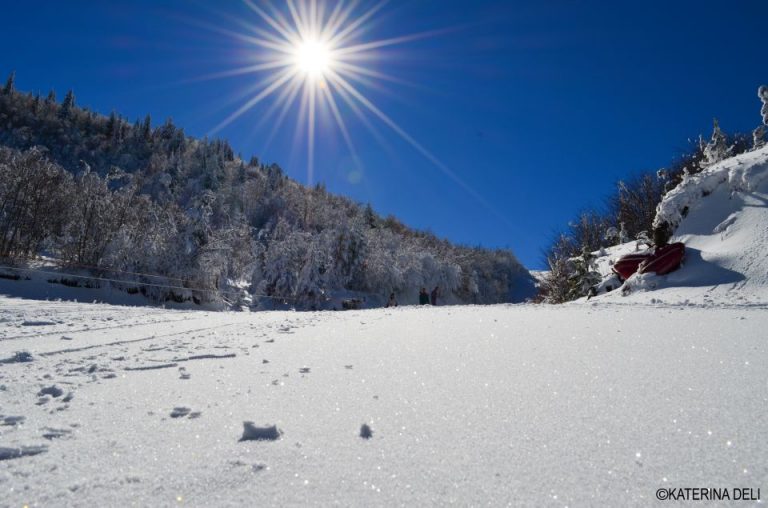
Dardhë – Korçë
Dardha Village – The Breathtaking Magic of the Winter Landscape
Dardha is one of the most interesting villages to discover during winter, covered in snow and offering stunning beauty. Dardha is located at an altitude of 1344 meters, 20 km southeast of Korça, surrounded by impressive natural beauty, characteristic stone houses, and cobbled streets.
Transformed into an all-year-round tourist destination, Dardha also has new buildings and contemporary hotels that welcome thousands of tourists during traditional village and annual festivals.
“Uji i qelbur,” Dardha’s healing spring with high sulfur content, and special traditional dishes like “lakror me dy petë” (a type of pie) baked in “saç” (a traditional oven), wild plum raki, and pickles are some of the highlighted values you find in Dardha.
Also, don’t miss visiting the village churches and natural ski slopes, where you can experience unforgettable moments during the winter season.
Boboshtica – Korçë
Boboshtica, the tourist destination of resources and biodiversity
Boboshtica, another tourist destination of Korça located five km southeast of the city, stands out with its beautiful nature and hilly and mountainous landscape.The clean air, cool spring waters, rich biodiversity, ancient fruit trees like quince, plum, cherry, and a variety of medicinal plants are some of the riches of this village in the Korça district.Boboshtica is also known for its old churches like St. Mary, St. Nicholas, St. John, and St. Demetrius, protected as Cultural Monuments of Albania.Boboshtica offers suitable terrain for hiking, mountaineering, running, paragliding, cycling, etc. It is famous for producing plum raki, a tradition passed down through centuries.
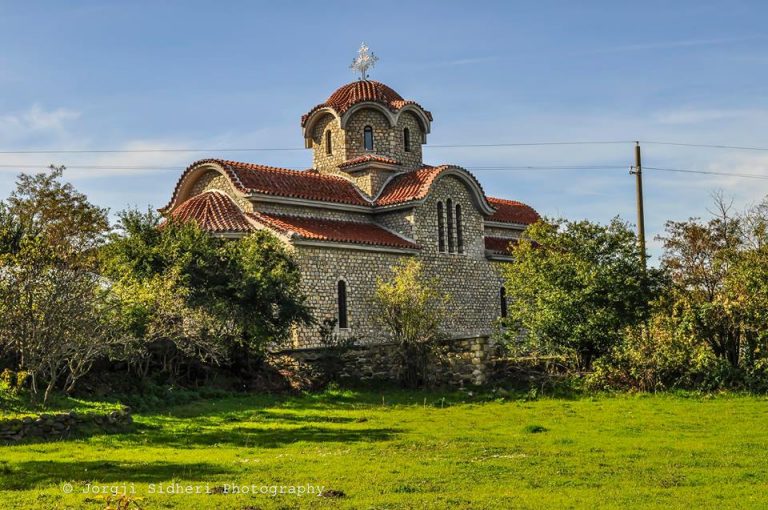
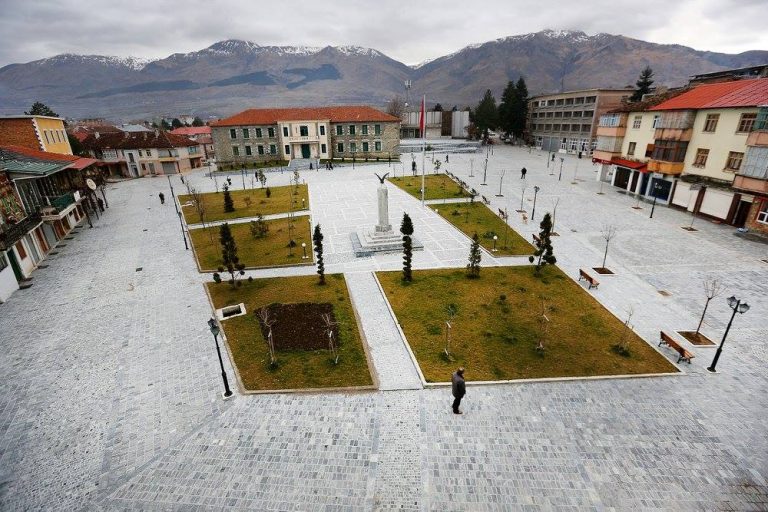
Rehovë – Ersekë
Rehova, the village at the foot of Gramozit
The picturesque village of Rehovë, nestled at the foot of the Gramoz mountains and located just two kilometers away from Ersekë, is known as the “stone village” with back-to-back houses, each adorned with a porch. This village is marked by its historic doors, known as “Rruga e portave” (The Street of Doors), which are part of Rehovë’s Historic Center. This village is a must-visit cultural destination, where guesthouses have preserved their architectural identity with stone and wood elements, skillfully crafted to provide comfort and tradition to tourists. Traditional foods favored here include dredhaniku with walnuts, petulla të fshira, petkat, çorba, roshnicat, etc. Every year, more tourists are drawn to Rehovë to explore the local cuisine.
Tushemisht Pogradec
Tushemishti, the village on the edge of Drilon
Located along the enchanting Drilon river, the tourist village of Tushemisht is just a few kilometers away from the city of Pogradec. Selected as one of the 100 tourist villages of Albania, Tushemisht offers a beautiful panorama with old centennial houses and attractive sites such as the Church of St. Pandeleimon and the house of “Teto Ollga,” which houses a bust dedicated to the actress Violeta Manushi. A natural monument of the village is Drilon, a natural river spring, part of the National Protected Park, in the Albanian part of Lake Ohrid. The area’s wonderful nature, clear amber waters, and tranquility are among the rare values that can be experienced in Tushemisht. This area is known for its delicious dishes of koran (a local fish) and winter preserves, sweet and aromatic jams and gliko.
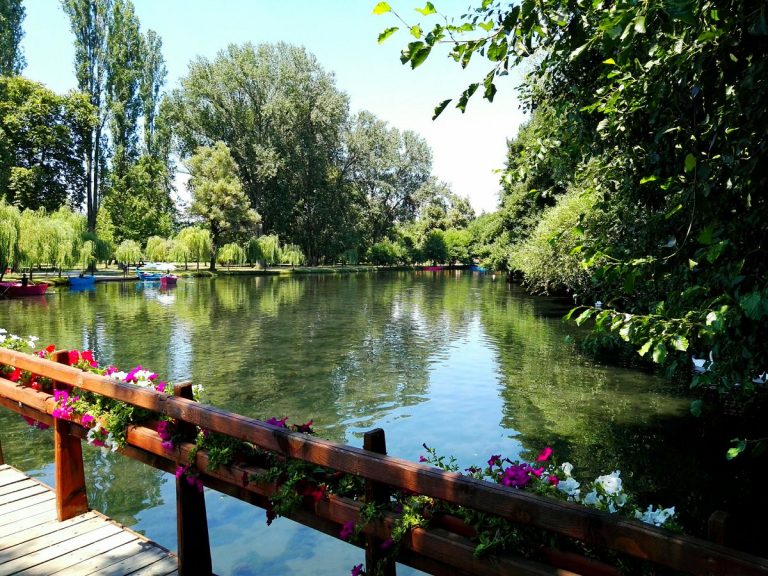
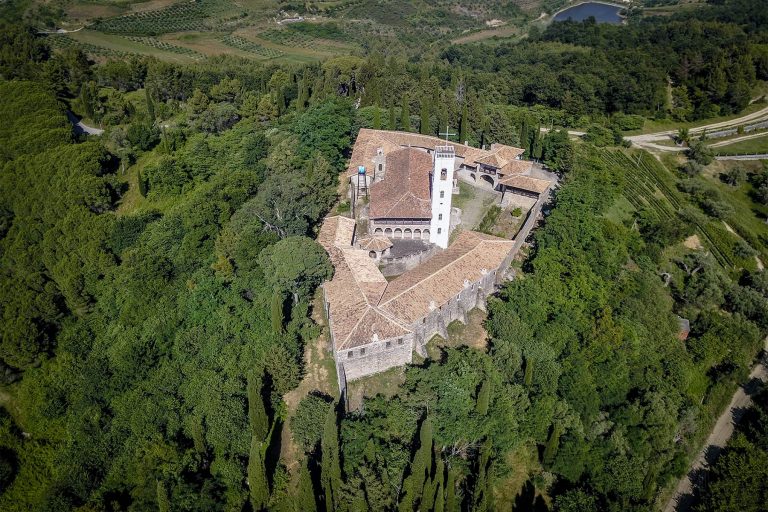
Libofshë – Fier
Located along the Seman Delta on the Adriatic coast
Libofshë is the unique tourist village of Libofshë, inhabited since ancient Neolithic times. This village is home to 15 beautiful churches, four of which are protected as National Cultural Monuments. Notable among these are the beautiful Church of St. George, located east of the village; the Church of St. Nicholas in Vanaj, built in 1777; and the Church of St. Mary, constructed in 1782, part of the Kolkondas Monastery, built in 1814-1815 by Ali Pasha Tepelena in honor of the monk Kozma. Every August 24th, a local festival and fair take place near the Kolkondas village monastery. Libofshë is also known as the site of the first Albanian school in Myzeqe.
Positioned along the Seman, Libofshë also boasts potential for coastal tourism. The Adriatic coastline that bathes this village stretches for about 8 kilometers and includes beautiful meanders of the Seman and pleasant beaches, notably the Ndërnënas beach.Visitors to Libofshë discover not only culture and history but also the village’s traditional organic food.
Nepravishtë Gjirokastër
Nepravishta, Libohova’s balcony with roses
Facing the beautiful Drinos field, Mali i Gjerë, and the lower Dropull area, is the village of Nepravishtë, nestled at the foot of the Bureto mountain.The houses in Nepravishtë are built among trees and surrounded by beautiful gardens, balconies with courtyards, and rose-filled vases. The village, located 20 kilometers from Gjirokastra, is the largest in the Libohovë region. It offers several attractions for visitors, including the Melani Fortress, Melani Teqe, and the Paleochristian Church of the Monastery, attracting visitors from all over Albania.The Nepravishtë Spring or Vrizi is well-known among all visitors, and in recent years, agribusiness has been flourishing in the area.
Dhërmi
The Coastal Village of Dhërmi
Perched where the slopes of Mount Ceraunia (Akrokeraune) kiss the Ionian Sea lies the beautiful village of Dhërmi, one of the elite attractions of the Albanian Riviera, attracting tourists every summer season. Dhërmi enchants with its lush nature, filled with olive and orange trees, the deep blue beaches of the Ionian Sea, beautiful stone houses with red roofs. This typical Mediterranean village, part of the Himara region, consists of three neighborhoods: Kondraqa, Gjileka, and Dhërmi. On the hill is also the Monastery of Saint Theodhoros.
Among the blue treasures of Dhërmi, sought after by local and foreign tourists each year, are noteworthy sites like the Alevrat Beach, a small rocky bay with crystal-clear waters; the Medieval Pirate Cave, written about by our writer Petro Marko; the stunning Gjipe Bay with soft white sand; and Grama Beach, another gem of the Ionian Riviera.
On the journey along the Albanian Riviera between Llogara Pass, Dhërmi is located 210 km from the capital Tirana, 52 km south of Vlorë, and 72 km north of Saranda.
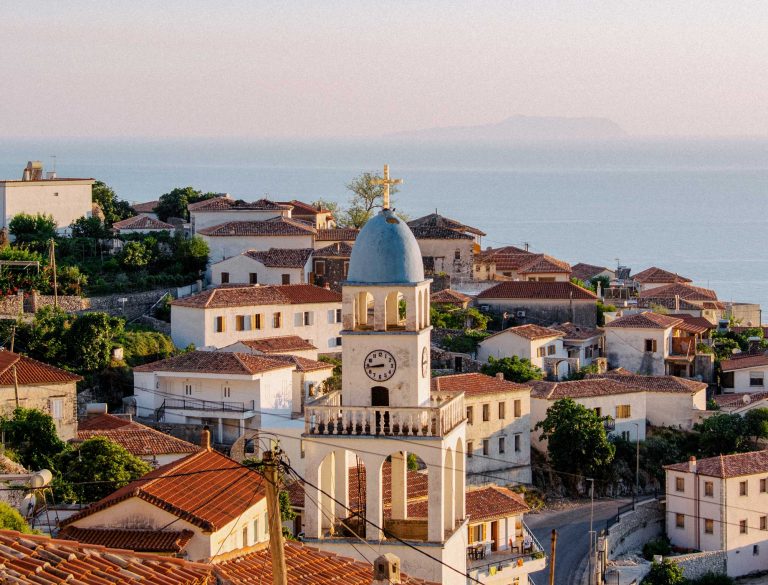
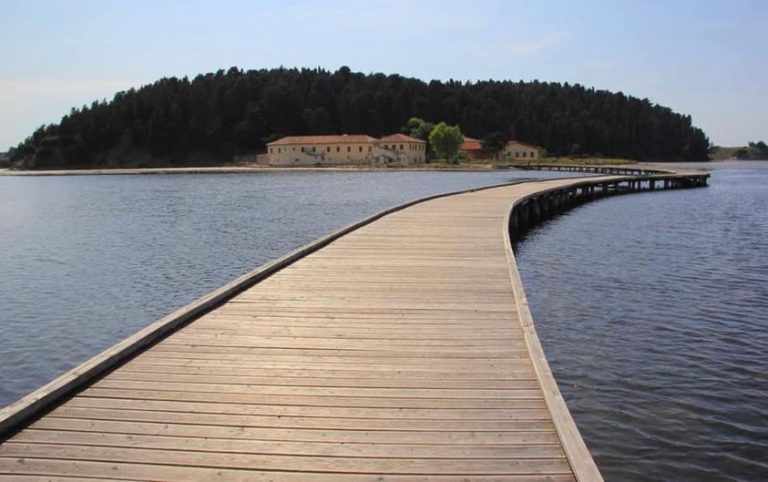
Zvërnec – Vlorë
Zvërnec, nestled among tall pine trees, is located 10 km northwest of the city of Vlorë. This small island of Vlorë can be reached by walking across a 270-meter-long wooden bridge, offering a unique encounter with nature. The bridge, built in recent years, splits into two paths halfway, with one leading to the old monastery and the other to an oasis where visitors can observe birds and fish near the wide lagoon.
The monastery is one of the most impressive works of Albania’s cultural and religious heritage. Its construction is thought to have occurred between the 12th and 13th centuries and is characterized by Byzantine architectural style. The monastery stands on a picturesque tract on Zvërnec Island, alongside the Narta Lagoon. The Zvërnec Forest is a natural monument, spanning several hectares. The entire complex, with its tall trees, is impressive in the field of scientific studies, as it is considered a rich habitat for nocturnal owls. Zvërnec is a village that welcomes numerous tourists from around the world for the attractions it offers.
Vuno – Vlorë
Vunoi, the pearl on Jon
Vunoi, one of the pearls of the Ionian coast, is a small coastal tourist village, located south of the city of Vlora. Located on the hill, while traveling through the cobbled streets of the village you can find shelter near the stone houses and visit the historic church of Saint Kolli or the church of Saint Mary in the center of the village.
The area around Vunoi is wonderful for hiking up the mountain beyond the village, or across the road to the Gjipe canyon, where magical nature grabs you and takes your breath away. The two closest beaches when you get off Vuno are Gjipe Beach and Jala Beach, pearls of the Albanian riviera.
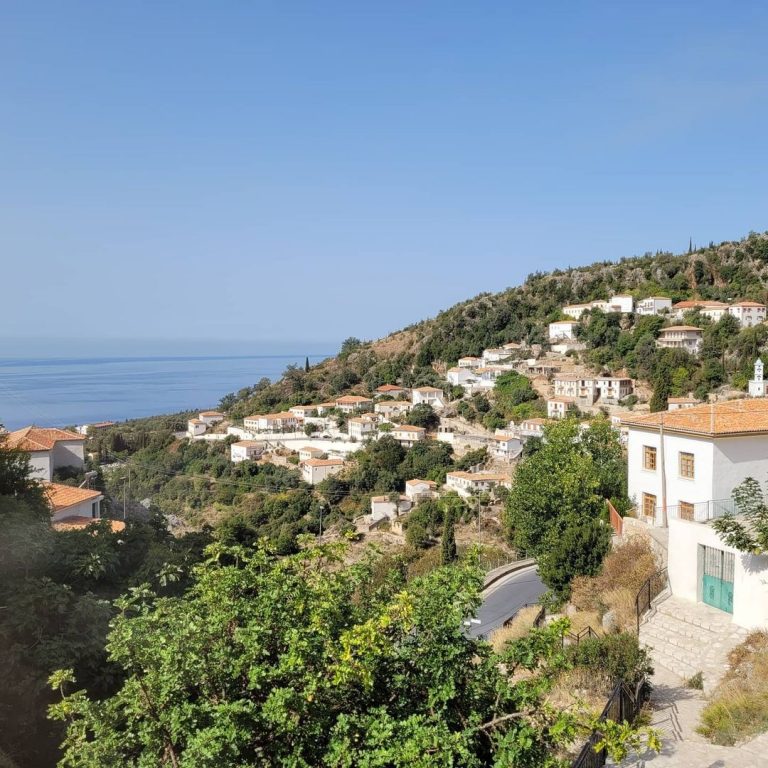
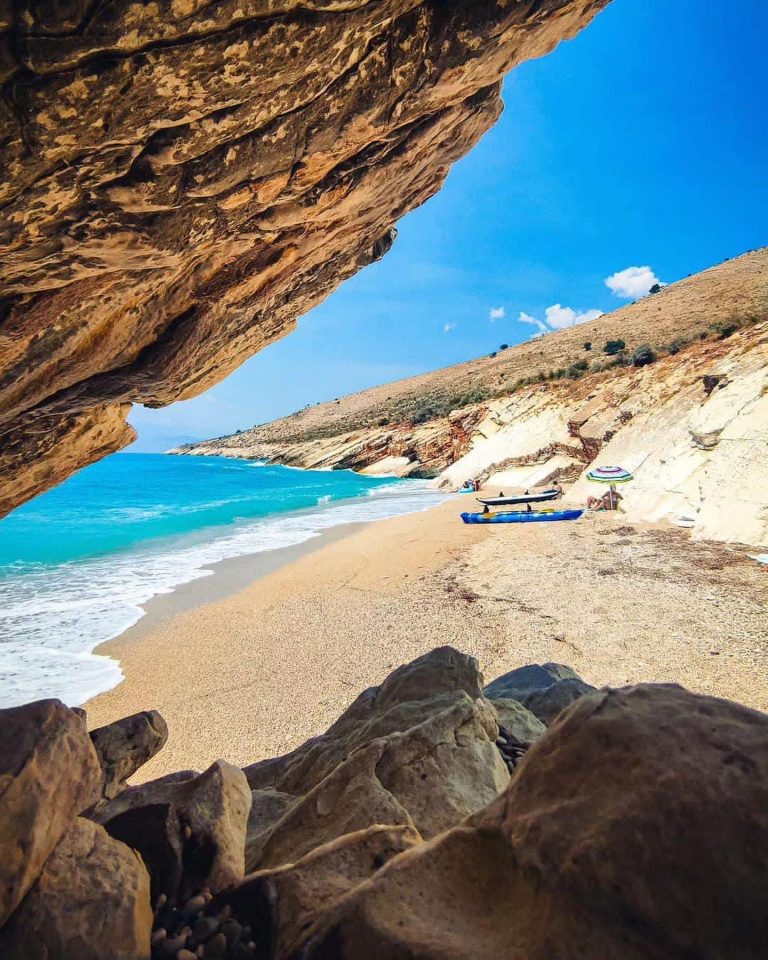
Lukova – Sarandë
The Coastal Village of Lukovë
Between two hills adorned with olive and orange plantations lies the beautiful Lukovë, one of the characteristic villages of the Ionian Riviera, located between Saranda and Himara, 30 minutes away from each of these two important tourist destinations in southern Albania.
Its coastline harbors numerous intimate small beaches with unique views and is surrounded by forests and green hills, perfectly harmonizing with the blue color of the Ionian Sea.
The village’s houses are connected by roads to the beaches and caves, while characteristic paths lead to the courtyards with trellises and flowers of the tall houses in the village. In the center of the village, you can visit the Church of Saint Athanasius. One of Lukovë’s cultural treasures is the Basilica-style Church of Saint Friday, which is built on a hill.
The coastal climate of Lukovë wonderfully blends with its nature and dreamlike landscapes where the waves of the Ionian Sea dance over the rocks. The coastal village of Lukovë is one of the most preferred tourist destinations throughout the summer season, as its coastline is still untouched and undiscovered on a massive scale.
Customise your Albanian tour now!
Other Destinations
Get in touch with our friendly team
- contact@absolutealbania.com
- +355 67 40 567 56
